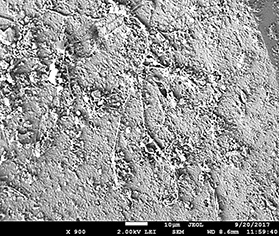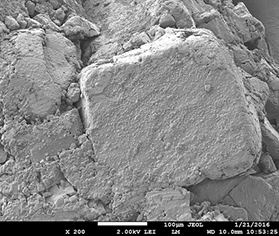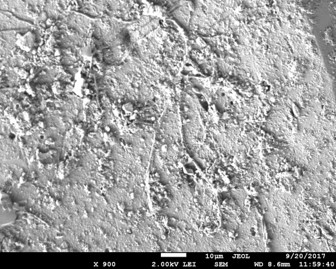SEM Session Modules

Kingdoms of life--Pollen
Learn about how flowering plants reproduce and examine different types of pollen using the SEM

Face Masks--How do they Measure up?
Learn about the importance of face masks during a pandemic and use the SEM to measure
holes in different types of masks.

The World of microscopy
Learn the basics of observing small samples and use the SEM to view various types
of samples.

Microscopy
Learn about how a Scanning Electron Microscope produces images and use the SEM to view various samples.

Energy Dispersive Spectroscopy--Elemental analysis
Learn about how the SEM can be used to identify elements and use the EDS software on the SEM to identify a chemical compound.

Forensic chemistry--a whodunnit activity
Learn about how the SEM can be used to identify elements and solve a crime using the EDS software to identify a chemical compound.
*Remote control of the Scanning Electron Microscope requires the download of free desktop-sharing software and depends on respective internet connections.
Ohio Science Standards
The following modules are based on the Ohio Science Standards and starts off with a basic concept. As some subjects are re-examined in further detail in high school science classes, the same modules can be used for various grade levels by adding or subtracting information.

Physical and chemical properties can be used to identify rocks and minerals
- Instrument: Scanning Electron Microscope
- Grade level/class: Grade 6, High School Geology

A unique spectrum can be used to identify any element
- Instrument: Scanning Electron Microscope
- Grade level/Class: High School Chemistry
Other Modules
The following modules can be used as-is or as a starting point for ideas.
- Insects: Up Close and Personal Explores the similarities and differences between various types of insects.
- The Structure of Fabrics Examines fabrics to illustrate that objects under the microscope can vary greatly from expectations to reality.
- Exploring Bacteria and Fungi Examines bacteria and fungi morphology.
- How do Plants Reproduce? Examines pollen from several different types of flowering plants.
- What does Pollen Look Like? Examines the morphology of pollen from different types of plants and flowers.
- SI Units: How Big is a Nanometer? Explores the metric system, allowing students to see just how big (or small) a nanometer really is.
Check out more SEM images.


